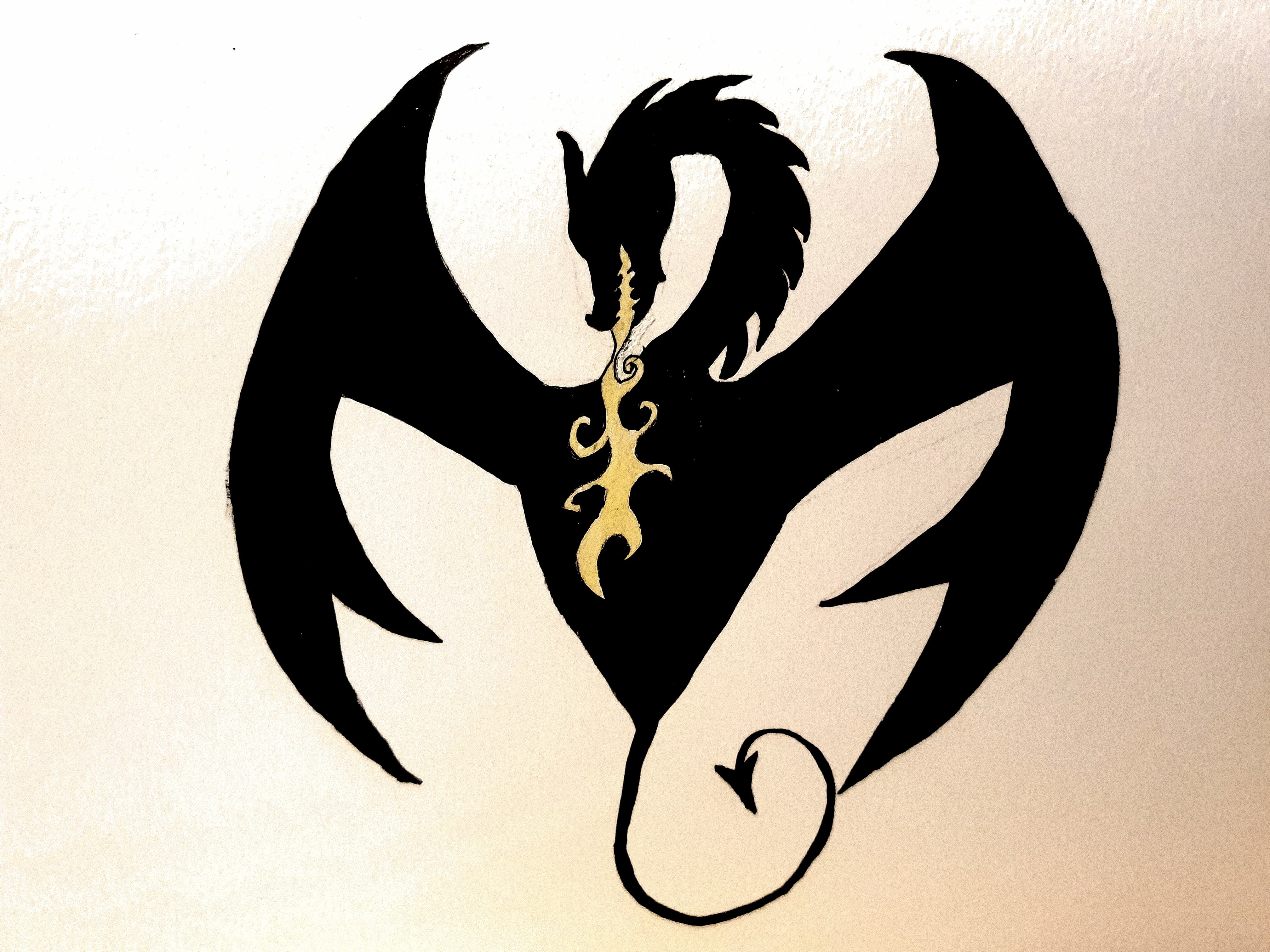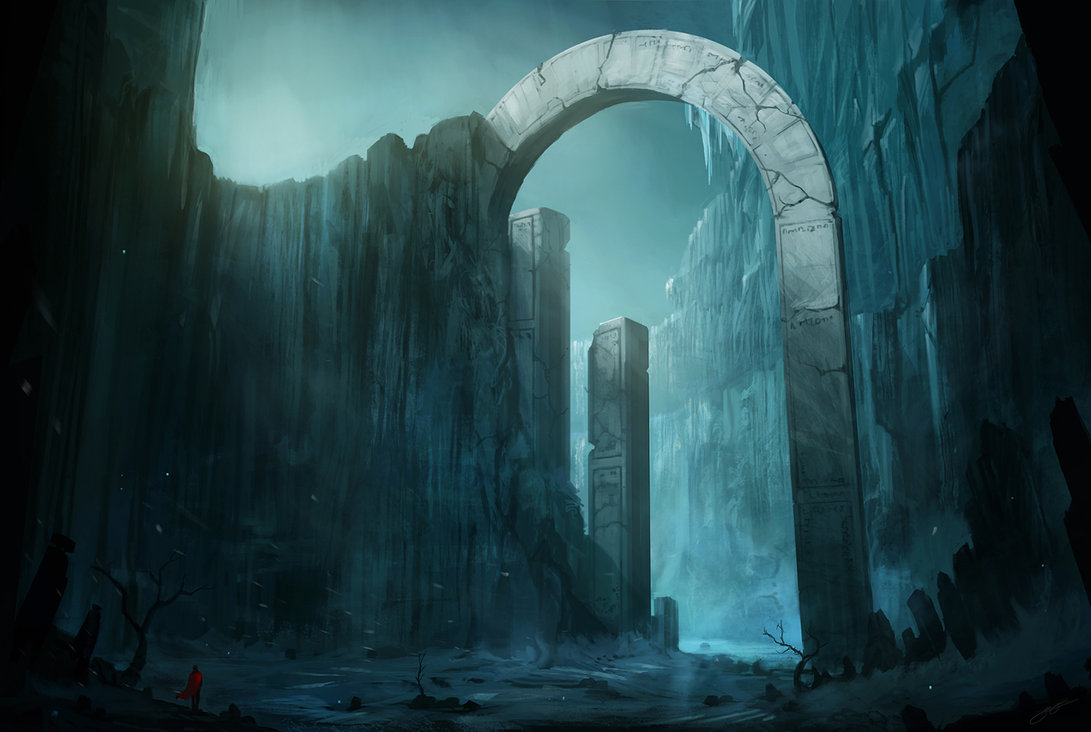The Heraldic Symbol of the Dunheuvelin Family
“Yes, here it is. A dragon breathing fire on itself. Such a ludicrous emblem, but on this dress it seems almost…” The general clicked his tongue against the roof of his mouth. “Romantic? Why, am I standing in the presence of a Dunheuvelin bride?”
The Seige of Erlenfels and the Creation of the Symbol
The traditional heraldic symbol of the Dunheuvelin family is a black dragon breathing fire on itself. It is thought that the design was gifted to the son of Chasnar Dunheuvelin by the latter's rumoured lover, Vinzent Rhaelen. Chasnar had served his König as Master of the legednary military unit, the König's Dragons; however, he and his dragon, Leyarn, both died at the Seige of Erlenfels. It was said that when the invading Varsii SkinWalkers realised that the city was lost, they attempted to bring down a dragon. Armed with broken arrow heads, they had taken to the sky and attached themselves body of Chasnar's beast, attacking savagely. Eyewitness accounts claim that that when Leyarn was seen flying away from the town, it was assumed that the dragon - weakened and confused from bloodloss - was intending to throw itself into the bay of Kragtigehoek. Instead, the dragon turned its fire on itself, falling to the earth in a terrible ball of flame.Symbol and Motto in Kredasene History
In honour of their ancestor's death, the Dunheuvelin clan adopted the motto, "Dragon, Wear Your Flames."The Raskvaerii Invasion of Kredashmi
During the Raskvaerii invasion of Kredashmi in 17 SGC, the symbol of a dragon breathing fire on itself became a popular motify outside the clan's territory of the Vuurfelde (The Firefields). The Kredasene army marching against the invaders carried banners emblazoned with the motif, and it quickly came to represent the Kredasene spirit of defending the freedom of their nation even if it meant sacrificing one's own life.The Rebellion of Gerard Dunheuvelin
“Don’t bother calling on the dragons in you defence; they can’t hear you. Laisrén was the last dragon to fly these skies, and he died alongside his rider. He died with Otto.”In 40 SGC, the Raskvaerii conquerors of Kredashmi faced their most dangerous opposition in the form of a popular uprising headed by Gerard Dunheuvelin. The revolt had various causes, including the political and religious tensions generated by the forced indoctrination of the Kredasene people into the Raskvaerii faith in the Holy Chorus of Saints; high taxes resulting from the ongoing unrest in Lormont; and instability within the local leadership due to the systematic dismantling of Kredashmi's traditional clan heirarchies. The final trigger for the revolt was the unrest in the Vuurfeld caused by the witch trial of healer Beatrijs Roermond. In the eight years running up to the rebellion, the image of a black dragon took on a new meaning in the Vuurfeld. In 32 SGC, the last Dunheuvelin dragon, Laisrén, was shot down by Raskvaerii harpoons over Lake Irriley. Described in contemporary accounts as having scales the colour of Hohenhoek jet, the adolescent dragon and his rider, Otto Dunheuvelin, were both thought to have perished. When the rebels marched against the forces of General Mariusz Senyavin and König, the Dunheuvelin banners were carried as a symbol of vengeance for Laisrén and his riders.
His cousin had whispered to him the cautionary words of the Dunheuvelin family motto. It had been adopted by their ancestor, Ulrich Dunheuvelin, after his son’s devastating defeat at the Battle of Alahnis. It was a phrase that was haunted by the profound sorrow felt by a father who had watched his entire family destroy itself with rebellion.
Dragon, Wear Your Flames.
- Ancient family motto.
Abide in Abedience.
- Modern family motto.





I love the two stories behind the mottos, and behind the symbol. Really good job! :D
Explore Etrea | March of 31 Tales
Only just seen this. Thank you so, so much!